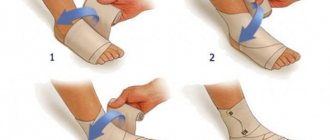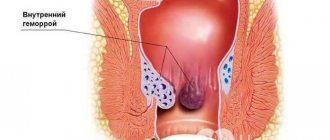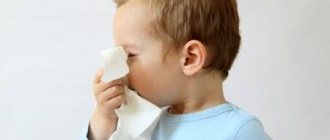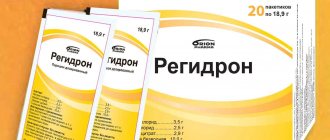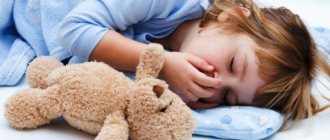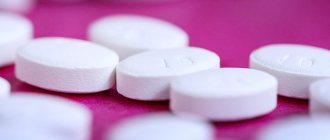03.09.201690882
When children are still small, they cannot cope with the difficulties that arise. At the same time, the younger the baby is, the more help he requires. For example, when a runny nose appears, the child cannot blow his nose himself. Treatment of a runny nose is complicated by the fact that you must control everything yourself. After all, the baby is not yet able to do this. Today we’ll talk about how to treat a runny nose in a 1.5 year old child, what medications to use, whether it is possible to treat a child at home with folk remedies, and how improper treatment of rhinitis can result.
Runny nose
- Causes of rhinitis in a child
- A 1.5 year old baby has a runny nose: how to relieve the condition
- Treatment of a runny nose in a 1.5 year old child with medications
- Prevention of rhinitis in children
What does the absence of temperature mean?
Snot and cough in this form can occur for a variety of reasons.
- It is normal for a baby to clear his air passages in this way, so in this case there will be no temperature. But parents should be as careful as possible: is this procedure any different from the usual version? It is precisely due to the small age and weight of the newborn that the disease can develop suddenly, even to pneumonia.
- Unlike bacterial diseases, viruses are not perceived as foreign cells. The body does not fight them, and, therefore, the temperature remains normal. In fact, there are strong inflammatory processes going on inside, which are especially dangerous for babies. Further, especially if a bacterial infection occurs, we can talk about various complications for the respiratory system, joints, and cardiovascular system.
- Allergies are no less of a problem. It passes without fever. It is easy to track by clear snot with a runny nose, dry cough, redness of the eyes, production of tears, the appearance of a rash or redness of the skin. Allergies in infants are often mistaken for a cold without fever, but it is much more dangerous. If the allergen is not removed immediately, the child’s snot and cough quickly turn into bronchitis, pneumonia, or even asthma. For a baby, such complications are extremely dangerous.
- Pharyngitis can produce such symptoms. The child’s throat is sore, there is a sore sensation, pain, and a headache. It is often caused by a dusty room or prolonged contact with smoke. This happens especially often in the spring and autumn. In addition, too dry air provokes the appearance of the disease, so in the hot summer the baby’s room must be sprayed with water, or even better, an air humidifier must be installed.
- If the cough and runny nose do not go away for a long time, and there is no fever either, we can talk about chronic processes. This happens with advanced diseases, and treatment in order to remove the consequences will take a very long, persistent and expensive time. For infants, chronic diseases are fraught with serious problems, including disability.
- A dry cough without a runny nose may appear if there is a foreign body in the respiratory tract. Then the temperature will not rise, but the cough will remain after taking any medications. The only way out is to remove the item.
It is important to know!
If a dry cough and runny nose bother a child for a long period of time and there are no other signs of a cold, this is a very dangerous symptom.
Against the background of an allergic reaction, chronic bronchitis can quickly develop, as a result of which bronchial asthma often occurs - a severe pathology requiring emergency medical care.
Therefore, any deviations from the normal state cannot be ignored, including such a seemingly harmless symptom as a runny nose without an increase in body temperature. To prevent the development of severe complications, it is important to contact a specialist in a timely manner. Self-medication, especially in relation to a child, can be dangerous.
What to do if you can’t call a doctor?
Of course, you need to see a doctor at the first opportunity, but you can take some actions yourself.
To start treating your baby, you must first determine whether the child has an allergic runny nose and cough or a viral one. If people around you are seen sneezing or coughing, it is a virus, and you need to start fighting it without delay.
- It is necessary to take antiviral drugs at the first symptoms (allowed for the first 2 days, but only the first 24 hours really help). Medicines are taken according to age and given in strict accordance with the instructions. If the child is supposed to not eat for an hour beforehand, it means that nothing but water can be given. Usually within 12 hours the runny nose becomes significantly less. For babies, Interferon is suitable, which is dripped into the nose from the first days of life.
- Cough should not be treated with drugs with mucolytic properties. And up to 5 years, they are accepted only for confirmed pneumonia. Such medications actually thin the sputum, but increase its volume. The baby is not able to push it out with his cough push, so the sputum remains inside, feeding the bacteria and causing serious complications. But a lot of liquid will help moisturize a dry cough and remove phlegm naturally. Weak teas, herbal decoctions, compotes - anything that the baby agrees to drink will do.
- To make it easier for a child to breathe, moist air is needed. If there are no special technical means, a regular liquid spray or several bowls of water around the room will do. But oils must be used with caution. They are not recommended for children under 6 years of age. In addition, the child may be allergic to this substance. And you shouldn’t steam your feet - a sudden rise in temperature won’t lead to anything good, and it won’t make your runny nose go away.
- To make your nose breathe, you can use many products. If you drip interferon, for example, the snot is automatically removed. You can use saline solution, if you have a severe runny nose, use vasoconstrictor drugs, but this is only as a last resort. For older children, “Pinosol” is perfect, created on the basis of natural oils and kills both viruses and bacteria. You can rinse the spout with a solution of sea or regular salt; iodized salt works well.
Advice
After 6 years, the use of aromatic oils is allowed. If you are sure that there is no allergy, 1 drop of lavender oil on your pillow will help reduce inflammation of the nasopharynx, ensure sound sleep and quality rest at night.
- It is worth constantly measuring the temperature so as not to miss its sudden appearance.
- If your baby is sick, you should never stop breastfeeding. This will help your little body recover quickly.
Such remedies are not suitable if the baby has an allergy, and snot and cough are its signs. Of course, moist air and drinking plenty of fluids also work here, but the main thing is to remove the cause of the allergy. What's new in the room lately? Toys, new children's cosmetics, household chemicals? Maybe for some reason dust appeared or a bouquet of flowers was brought in? Even an open window can bring allergen pollen into the window along with fresh air, and with it - snot and cough.
If, by all indications, the condition is more like an allergy, you should use antihistamines. The most commonly used are Loratadine and Suprastin, but there are quite a lot of analogues. The same "Diazolin", despite the side effects, remains popular, affordable and effective. Did your child take a couple of tablets and the runny nose went away? This means that this is definitely an allergy, which will now have to be treated.
In any case, you should absolutely not give your child antibiotics without a doctor’s prescription. They have absolutely no effect on viruses and do not relieve an allergic reaction. All that can be achieved by such an action is to weaken the baby’s already exhausted body, and snot and cough will be replaced by real pneumonia. Only a pediatrician can select medications according to the state of health, the nature of the disease and age. Infants may be offered hospitalization.
Unfortunately, recently many dangers have appeared that pose a threat to the child. Mutant viruses and allergic reactions to parts of the environment have become commonplace. Snot and cough without fever in a baby may be the first sign of serious problems. To treat them, the help of qualified specialists is necessary.
Copious nasal discharge is not only a symptom of ARVI and other acute inflammatory processes in the nasopharynx. Children are susceptible to physiological runny nose for the first few months of their lives. The answer to the pressing question of how to treat a cough from snot in a child worries mothers of infants. But parents of children who are already one year old face the same problem. Pediatricians unanimously declare that the best treatment is prevention.
Prevention of a runny nose
Snot in children may appear due to hypothermia only in isolated cases. Most often these are bacterial or viral infections, less often – an allergic reaction of the body. Thick accumulations of mucus on the back wall are quite difficult to treat, since it is necessary to eliminate the cause of the disorder in an infant or older child. The best way to prevent infections is to follow these rules:
- regularly ventilate the room;
- create a comfortable microclimate for breathing in the room (humidity, air temperature);
- dress the baby according to the weather;
- often walk in the fresh air;
- do not use antibiotics and vasoconstrictors unless absolutely necessary;
- strengthen the immune system.
How is a runny nose related to a cough?
Cold season occurs during the cold period of the year. But doctors and parents are increasingly noticing that children are coughing for several months in a row. It doesn’t matter what time of year it is. A child’s snot and cough are not necessarily accompanied by a high fever. With different symptoms, the same thing often happens: young patients see a doctor. Mothers complain that the baby coughs a lot, and the doctor insists on treating a runny nose.
Now there is no shortage of medications for cleansing and rinsing the nasal sinuses in children of all ages. We are pleased with the rich assortment of antitussive and mucolytic drugs; traditional medicine always comes to the rescue. However, an abundance of medications and a variety of home treatments do not help to quickly cure a child’s cough from snot.
Without stopping the “nasal runny”, taking any antitussive and expectorant medications is useless.
There is a problem with the sensitivity of the mucous membrane of the baby's upper respiratory tract, and no medicine can speed up the formation of his respiratory organs. A runny nose and cough do not always signal illness. Thus, snot in a 3-month-old baby is most often associated with the so-called “physiological” runny nose, characteristic of newborns.
Liquid transparent snot in a 1 year old child can be caused by a respiratory viral infection, inflammatory diseases of the upper respiratory tract (laryngitis, tonsillitis, tracheitis). Mucus accumulates in the nasopharynx, flows down its walls, and ends up on the inner walls of the trachea and bronchi. The receptors are irritated, and a reflex response occurs—cough.
A 1.5 year old baby has a runny nose: how to relieve the condition
After prescribing treatment, you must carefully follow the doctor’s advice and recommendations in order to cure a runny nose in a 1.5-year-old child. But, still seeing how the baby suffers from excess mucus, I want to help him. How to do this without causing harm?
- Cleaning the nasal cavity will in any case improve the baby’s well-being. You can remove excess mucus using a nozzle ejector or aspirator, as well as a simple syringe without a needle. Then you need to drop a drop of saline solution into your nose to prevent a crust from forming. Do not rinse your baby's nose at such a young age. Washing will lead to otitis media and other side effects.
- Treatment of a runny nose in a 1.5 year old child requires attention and patience. Position your baby so that his head is higher than his body. Then mucus will not constantly accumulate in the nasal cavity in huge quantities.
- During the treatment of a runny nose in children 1 year old or 18 months old, it is important to ensure that the humidity in the room is regularly maintained. It is necessary to ventilate the room and wash the floor with a wet cloth as often as possible. This does not allow the mucous membrane to dry out - when the baby breathes, he will inhale moist air.
Useful reflex
Cough is provoked by foreign particles in the lower respiratory tract: dust, food crumbs, germs, pollen. Sputum also irritates the larynx, trachea and bronchi, provoking a physiological reflex. Even a healthy baby coughs at least 6 times a day to remove excess mucus in the respiratory tract. The main symptom of the types of cough listed below is episodicity and short duration. In such cases, the health condition is not impaired, there is no need to take antitussive, mucolytic and expectorant drugs.
When cough is not a symptom of illness:
- In the morning after a night's sleep, the baby coughs due to mucus accumulated in the bronchi.
- A cough in a 2-month-old baby appears when the baby chokes during feeding.
- During the period of intensive teething, a baby at the age of 6 months experiences increased secretion of saliva, and the cough reflex is triggered in response.
How thick snot appears
A worrying problem for every mother is snot in her child. Treatment may vary. In otolaryngology, the origin of white snot is often associated with the presence of an allergic reaction in the baby. But mothers should remember that with non-bacterial diseases, thick snot may appear in the child. How to treat them if the allergic nature of the disease is established? The following measures need to be taken:
- regularly ventilate the room in which the child is located;
- carry out wet cleaning of the room at least twice a day;
- take frequent walks in the fresh air;
- completely eliminate contact with potential allergens.
Often there may be a discharge of thick and clear snot. According to parents, thick snot in a baby is a mucous discharge that appears as a result of contact with an allergen, and it may not always be white. In this case, not only the allergic nature of the disease may occur.
Mucous secretions protect the baby's airways from the smallest particles in the inhaled air getting into them, and maybe the baby doesn't get enough fluids. If this is the case, it is recommended to increase the amount of water you drink and consult a doctor before treating thick snot.
In chronic diseases, such as bronchitis, or those that become protracted (pneumonia), the discharge of thick green snot may be observed, which can also appear with an advanced runny nose. The mucous discharge from the nose can take on a yellow-green color due to a bacterial infection, which is caused by the massive death of leukocytes and microorganisms.
Komarovsky considers thick snot in a child to be the most insidious. The nature of the origin of these discharges may be the same as in older children. You should not delay treatment, as this may lead to the development of complications, and babies at such an early age are not able to blow their nose on their own. Therefore, it is recommended to regularly inspect the nasal passages, for example, after each bath, and clean them as necessary.
What to do if your baby has a runny nose?
The effectiveness of treatment for snot in children directly depends on the competent choice of medications and proper use. What should you do to make breathing easier for a baby who is only 1 month old? To do this, cleanse the nasopharynx of mucus using thin cotton wool moistened with saline. This is the name given to a liquid that contains 9% salt and whose concentration corresponds to human blood plasma.
If the child is 2 months old and has a physiological runny nose, the saline solution will dissolve the mucus and make it easier to remove. In addition, the product moisturizes the inner membranes of the nasal passages and acts as an antiseptic.
How to treat snot in the throat of a child under one year old? Rinsing the nose and instilling saline solution helps a lot. The procedure brings undoubted benefits and has almost no contraindications. Coughing from snot can be prevented by instilling a diluted herbal infusion, a nasal remedy from the Derinat pharmacy, into the nasal passages.
When discussing how to treat snot in a 7-month-old child, parents should consider the following:
Various drops for the common cold differ in composition and effect; they have a moisturizing, vasoconstrictor, antibacterial and antiallergic effect.
But choosing drops for a baby on your own is a rather risky activity if it is not known what caused the runny nose.
First aid
- First of all, take care to clear the nasal passages of mucus. Let the baby blow his nose.
- If he is unable to do this, you can use a syringe or aspirator.
- Once the easily accessible mucus has been cleared, you need to deal with the substance that has accumulated on the back wall of the nose. For this purpose, use saline solution or sea salt solution. The product is instilled into each nasal passage twice a day.
- Take care to humidify the air in the room where the baby is.
- It is important that the baby has plenty of fluids to drink.
- Provide bed rest for the little one and exclude contact with other people.
- The diet should be light, excluding fried and fatty foods.
If you are wondering how to treat a runny nose in a child without fever, then the answer is as follows: rhinitis is a consequence of some process in the body, therefore the entire complex of therapy should first of all be directed to the cause of such a condition, and then to the consequence in the form of a runny nose .
- The doctor may prescribe antiviral or antibacterial drugs depending on the etiology of the runny nose.
- For local treatment, drugs can be used to reduce mucus secretion and improve the condition of the nasal passages to facilitate the child’s breathing process.
- Vasoconstrictor drops. Will be effective against viral infection. It is important not to exceed the period of taking the drug, so as not to cause addiction. They can prescribe Nazivin, Sanorin, Otrivin baby.
- Antihistamines. Necessary to reduce swelling, and also effective for runny nose of allergic etiology. Diazolin, Loratadine or Suprastin may be prescribed.
- Oxidizing agents. Such drugs are effective against infectious processes. Silver ions accelerate the removal of microorganisms from the nasal passages. Protargol is considered the most popular.
- Local antibiotics. Used for bacterial rhinitis.
- Physiotherapy procedures, in particular quartz and UHF, have a good effect. Laser therapy is the most successful.
It is also necessary to remember that the child’s condition may be aggravated by other symptoms, in addition to the runny nose and lack of fever. The baby may experience:
In such cases, therapy will be comprehensive and aimed at eliminating all symptoms.
Traditional methods
Traditional medicine is very effective in combating a runny nose that is not accompanied by fever. But even here you need to be careful and not self-medicate. It is very important that the doctor establishes the etiology of rhinitis. And use traditional methods only on doctor’s recommendations.
- Chamomile decoction can be used for rinsing.
- Warm herbal teas from rowan, raspberry leaves, with honey.
- Inhalation over potatoes.
- Warm foot baths with the addition of tangerine or orange oil.
As you can see, there may be several causes of a runny nose that is not aggravated by fever. This is not always a sign of pathology. In any case, when rhinitis appears, parents should take the baby to the doctor to verify the cause of the condition and, if necessary, begin a course of treatment prescribed by a specialist.
In many cases, the first sign of disruption to the well-coordinated functioning of the body is an increase in body temperature. Most often, this symptom is observed during the development of an infectious disease. It is the increase in temperature that indicates that the body is fighting pathogens. In some cases, a runny nose may occur against the background of normal body temperature; this phenomenon is especially common in childhood. What is the cause of this disorder and what treatment is needed? Let's talk about this below.
The content of the article
How to treat snot and cough in a child?
If a child sneezes and snot streams, then he could catch ARVI. Treatment should be started in a timely manner, so as not to advance the disease. Otherwise, the infection will penetrate into the lower respiratory tract. This is one of the main causes of acute bronchitis and pneumonia.
When a child chokes on snot in a dream, this means that mucus flows down the wall of the nasopharynx. And in such cases, nasal vasoconstrictor drugs are instilled only at night. The complex treatment does not end there. After eliminating the runny nose, you should take care of your irritated throat. Drinking plenty of water, weakly brewed herbal tea from medicinal raw materials approved for small children - linden blossom, chamomile leaves, sage leaves - helps to soften it.
When the mucus in a child’s nasopharynx is liquefied under the influence of medication and water procedures, it is difficult to control whether the baby swallows it. World-famous pediatrician E. Komarovsky assures that this is not harmful to children. The doctor devoted one of his lessons for mothers to the effective treatment of a runny nose.
Video: how to speed up your baby’s recovery if he has snot:
Etiology of rhinitis in children
In babies, the appearance of thick snot has good reasons, such as a viral or bacterial infection or allergic diseases.
If a child develops thick snot, Komarovsky advises solving this problem immediately. He points out that infants are most susceptible to the occurrence of this disease, which is associated with the low secretory ability of the nasal mucosa, difficult and narrow nasal passages, as well as the absence of the cartilaginous part of the nasal septum.
These circumstances make it difficult to warm and purify the inhaled air and create quite favorable conditions for microbial and viral contamination. In other words, the occurrence of a runny nose in children is due to poorly formed immune defense, and its complex manifestation is reduced to diseases such as rhinitis and pharyngitis.
If a child has snot, what should you do? Knowing certain features of the functioning of the baby’s body and its growth, mothers are no longer surprised by the appearance of snot after a walk.
The main reasons that can cause a runny nose are:
- infectious;
- vasomotor;
- hypertrophic;
- allergic.
According to Dr. Komarovsky, it is also worth adding a medicinal reason to this list.
The occurrence of vasomotor rhinitis can be caused by a number of factors, such as hot food, psycho-emotional experiences, smoke, etc. This reason is indicated by clear, thick snot in a child.
The occurrence of infectious rhinitis is usually associated with the presence of a microbial, viral or fungal pathogen, and it can appear against the background of various diseases: influenza, colds, scarlet fever, etc.
The allergic component that causes thick snot in the child requires special attention. What to treat can be suggested by medical statistics, which indicate a progressive annual increase in the number of children suffering from various allergic diseases. It is quite clear that the cause of such a runny nose is contact with an allergen, and its distinctive feature is the presence of white snot.
Long-term use of vasoconstrictor medications determines the appearance of drug-induced rhinitis, or, in other words, drug dependence.
The appearance of various types of injuries to the nasal mucosa predetermines the presence of traumatic rhinitis. Causes may include mechanical, chemical or thermal injuries.
When an overgrowth of the nasal mucosa appears, a hypertrophic runny nose is formed, and when it atrophies, an atrophic one is formed.
Treatment of cough from snot in children
For a dry cough, it is necessary to take mucolytics, which thin out the viscous mucus in the bronchi. Along with the removal of phlegm, the body gets rid of germs or other irritants that provoke the cough reflex. In a state where the snot thickens and the cough becomes wet, doctors consider it necessary to give the child expectorants.
Mucolytic drugs
>
Helps thin the thick secretion of the mucous membrane. It is recommended to give such remedies to children for 2-3 days, until the productive period begins (wet cough, sputum discharge).
Bromhexine syrup can be taken by children from birth to cure cough from snot. The single dose for children under 2 years of age is 2 mg of the active substance. Frequency: 3 times/day.
Syrup "Gerbion" Plantain" pediatricians readily prescribe it to children over 2 years of age. The medicine is produced on the basis of plantain juice, which has a mucolytic effect.
Expectorants
They facilitate the removal of mucus from the bronchi and accelerate complete recovery from cough.
Alteika syrup received its non-proprietary trade name thanks to its herbal component - marshmallow root. Infants up to one year old take 2.5 ml of syrup once or twice a day. For children over 1 year of age, the daily dose of 7.5 ml is divided into three doses.
Gedelix syrup based on ivy leaf extract. Used to treat cough in children of all ages. The dosage regimen is the same as for Alteyka syrup.
The baby has thick snot
If a child develops thick snot, how to treat it will be suggested by the recommendations given above. Namely, you need to: regularly ventilate the room in which the baby is located and carry out wet cleaning. In a situation where hyperthermia occurs, you should give your baby boiled water as often as possible. In addition, it is recommended to adhere to the following rules:
- do not force feed the child;
- regularly inspect the nasal passages and suck out mucus;
- take the baby in your arms more often;
- talk kindly to the child.
Every mother is concerned about the treatment of a runny nose with any medications. As Dr. Komarovsky says, a runny nose in a child can be treated with medications, but you should follow the recommendations of pediatricians regarding their prescription.
Thus, vasoconstrictor drugs should be prescribed in a minimal dosage and only in the first two days of the development of the disease. To do this, you can use products such as “DlyaNos” (0.05%) and children’s “Otrivin”, which are indicated for infants.
If it is necessary to use antiviral and antibacterial drugs, the following can be used:
- drops "Protargol";
- nasal drops "Grippferon";
- oil-based drops “Retinol”, “Ectericide”, “Tocopherol”;
- rectal suppositories "Viferon";
- children's spray "Isofra".
When using these drugs, you should carefully read the instructions for use, and it is better to consult your pediatrician.
Among antihistamines, it is possible to use Vibrocil drops or Aquamaris or Aqualor Baby washing sprays.
The role of inhalations in the treatment of cough from snot
Drug therapy and herbal teas are only two directions on the way to rid children of runny nose and cough. For a more effective effect of healing substances on the lower respiratory tract, inhalation is recommended. Finely sprayed medications, mixing with water vapor, more easily penetrate deep into the trachea and bronchi. For the procedure, ready-made inhalers or home appliances are used - pots or bowls with hot water, herbal infusion, tubes made of thick paper.
The proposed form discusses the problem of what is better to do inhalations for coughing from snot in children.
Snot and cough in a child is a problem that many parents face several times a year. Some people immediately sound the alarm and think that the cause of their appearance is infectious diseases, some are generally at a loss: the child does not have any accompanying symptoms, except for a cough and runny nose. What to do? How to treat and how to alleviate the child’s condition?
First, you need to understand what triggers cough and snot in a child.
What is a cough and runny nose in a child?
Cough is a reflex reaction of the respiratory tract to inflammatory, chemical or mechanical irritation. That is, coughing is a function of the body that is needed to cleanse the respiratory tract. If they are normal, then the reaction should not occur.
The cough reflex is innate, but a child will be able to fully cough up phlegm only by the age of 4-5 years.
Every parent should know that the cause of a runny nose in a child can be not only a cold, but also a reaction to teething or allergic irritants.
Since the nasopharynx in children under 6-7 years of age is designed in such a way that all snot flows down the back wall and lands on the vocal cords, a reflex cough occurs.
Taking into account all of the above characteristics of the child, before starting treatment and taking any medications for cough and snot, it is necessary to understand in detail the reasons for their appearance.
Return to contents
Causes of cough and snot without fever
Doctors emphasize that the appearance of a cough without fever may indicate the onset or rapid progression of a pathological process in a child.
It is customary to classify the reasons why cough and snot appear without fever:
- In infants, this can become a normal reaction of the body to cleanse the respiratory tract of dust, mucus and contaminants. Parents should pay attention that the body reacts this way at certain hours: after breastfeeding, after sleep. There is no need to panic too much if such manifestations do not become regular and the child’s condition does not worsen.
- A child's cough can cause irritation of the respiratory tract. Children do not chew food well, so small crumbs can cause a cough. A feature of childhood is the perception of objects by taste, so small bulk substances enter the respiratory tract. In order to neutralize such a cough, it is necessary to remove all irritants from the respiratory tract.
- There are frequent cases when foreign objects enter the nasal passages and bronchi. In this case, the body’s reaction will be immediate. An absolutely healthy baby begins to sneeze, cough, and mucous discharge appears from the nose. If these are large objects, the baby may begin to choke or turn pale. In this case, you need to turn the child upside down and try to gently, tapping on the back, pull the object out. In this case, you need to urgently call an ambulance.
If a child has light mucous discharge from the nose and a prolonged paroxysmal dry cough, then these are clear signs of an allergic reaction of the body. If the cough does not stop, then you should urgently consult a doctor, since an allergic cough often develops into obstructive bronchitis and asthma.
Return to contents
How to treat cough and snot in a child without fever
If the child has a reaction of the body to certain irritants and they are not infectious in nature, then it is enough to do a massage, exercise or use folk remedies, and the illness will go away in a short time.
Particular attention in treatment with folk remedies is necessary for allergic forms. The use of herbal compresses, inhalations, drops is strictly prohibited: many of them can become additional allergens for the body, and the reaction will be immediate.
Breathing exercises will be a good treatment and prevention of such manifestations. All exercises are performed in a playful way, so the baby will enjoy playing and being treated.
Children really like playing with animals. You need to imitate the sounds of a cow. At this time, you need to lightly pat him on the back, you will clearly hear how the child’s voice changes, this helps to train the vocal cords and respiratory tract.
Any song sung in the voice of an animal also has a good effect on the respiratory tract. Deep inhalations and exhalations are excellent for training and quick recovery.
Return to contents
Cough and runny nose are a consequence of colds and infections
When coughing and runny nose are caused by infectious pathogens, the body begins to react immediately, so such manifestations are the norm.
If snot with cough without fever can be treated without consulting a doctor, then when a fever appears, you must immediately receive qualified help. Very often, untimely or incorrect treatment leads to serious complications: pharyngitis, laryngitis, tonsillitis, pneumonia, bronchitis, sinusitis.
In order to choose the right treatment, it is necessary to pay attention to the nature of nasal discharge and how the child coughs.
If green discharge appears from the nose, this is a clear sign of a bacterial infection in the body.
The snot does not acquire this color right away; at first it is transparent and abundant, and when the bacteria begin their active work, the color becomes rich green and the discharge becomes thick. This color may also indicate the onset of sinusitis.
This type of snot immediately causes a severe cough, viscous sputum is formed, which is difficult to remove. Consultation with a doctor and treatment with antibacterial agents are required. In some cases, a course of antibiotics is prescribed.
Yellow snot indicates the end of the child’s disease. Dead bacteria come out along with mucus. But in some cases, the yellow color of the discharge indicates the presence of pus and inflammation in the organ. Here the treatment is prescribed by an ENT specialist. In rare cases, yellow nasal discharge indicates an allergic reaction.
If the cause of the yellow discharge is an allergy, then it is enough to drip natural sea buckthorn or thuja oils, salt solutions, and they will disappear.
Return to contents
Pantry of traditional medicine
Cough and snot in children are best treated with traditional methods, this will minimize the impact of medications on the immune system. Moreover, most homemade recipes contain ingredients that taste good, and children eat them with pleasure.
Raspberry jam is good for coughs. It can be added to tea, but it has the best effect if it is absorbed for a while. The jam should be candied, not boiled.
Radish is a remedy that not only relieves cough, but also improves the child’s immunity. There can be several ways to prepare a healthy recipe: you can wash the radish, cut it into small pieces, place it in a roasting pan and simmer for an hour in the oven. Use the resulting liquid 1 tsp. 3 times a day. According to the second recipe, you need to wash the radish, cut a hole in it and put 1 tsp in it. honey After a few hours, juice will begin to stand out, which is taken 1 tsp. 3 times a day.
The snot of a child under 5 years old is very difficult to remove from the nose, so it is recommended to rinse with soda and saline solutions. It is necessary to prepare a solution, draw it into a syringe or syringe and inject it in a small stream into each nostril. Only after such a procedure will any drops be effective.
You can use carrot juice, beet juice and honey as drops. Since these vegetables have concentrated juice, it is better to dilute it with boiled water in equal proportions.
Snot and cough in a child are always unpleasant symptoms that need to be dealt with correctly and in a timely manner. Only an established cause of their appearance will help choose the necessary treatment. Remember, the health of the child is in the hands of adults!
Rate this article:
Colds are often diagnosed in childhood and especially in infants. The main reason for the appearance of cough with runny nose in children under one year of age is the clearance of various contaminants from the respiratory tract, which is considered normal.
In older children, cough, runny nose and fever become the main signs of the development of colds in the body. In some cases, the disease occurs without fever and this can happen for various reasons. What should parents do if their child has a cough and runny nose without fever, and what treatment methods should they prefer?
A child has a runny nose without fever, how to treat it?
In any case, you should never prescribe treatment yourself. When a toddler has rhinitis, the pediatrician will tell and describe how to treat it. For almost all causes of a runny nose, it is worth moisturizing the nasal mucosa well. But, in this case, you need not to overdo it, since you can fill your sinuses so much with water that it will be easy to provoke otitis media.
If a baby develops a runny nose without fever due to allergic rhinitis, then it is simply impossible to do without taking antihistamines. Even basic Claritin and Zordak will help you breathe deeply again.
Viral infections that actively attack a weakened body can be treated well with the help of immunostimulants. True, they should be taken in advance, before the period of seasonal diseases. Then not only the symptoms of the disease will decrease, but there will also be no aggressive progression as such. Drugs of this type include IRS-19 and Aflubin.
Reasons for the development of pathology
The presence in a child of a cough with a runny nose without fever is a sign of an incipient cold or allergy
The main signs of a cold, which can occur when various viruses enter a child’s body, are a runny nose and cough. The baby’s immune system begins to react to pathogenic microorganisms and enter into a peculiar reaction with them.
However, in some cases, problems arise with recognizing the virus and it easily penetrates into the cells of the body. If a bacterial disease develops, an increase in body temperature is immediately noted, but with a viral infection, the indicators remain normal.
In the absence of effective treatment for viral rhinitis, the risk of developing a severe inflammatory process in the sinuses increases, that is, sinusitis develops.
Parents need to understand that pathogenic microorganisms may enter the throat and trachea area.
In such a situation, in the absence of effective treatment, complications may develop in the form of:
- sore throat
- bronchitis
- tracheitis
- pharyngitis
- pneumonia
The penetration of various viruses into the child’s body significantly disrupts the functioning of the immune system, so the course of such a disease can be supplemented by a bacterial infection. With ARVI, other pathogenic microorganisms present in the child’s body are also activated, which leads to the development of an inflammatory process in the ENT organs.
Parents need to understand that even in the absence of fever with a cough and runny nose, it is imperative to show the child to a specialist who will find out the causes of this condition and prescribe effective treatment.
Useful video - Cough in children: causes, types and treatment
In some cases, the cause of cough and runny nose without fever may be the development of allergic rhinitis. Most often, this pathology is diagnosed in children and adults who spend a long time in a dusty room. Allergic rhinitis can occur as a reaction to chemicals, pollen, children's cosmetics and animal dander. In some cases, even healthy children may experience a runny nose and cough without fever due to too dry air in the children's room.
If a cough and runny nose without fever bother a child for a long time, this may be a dangerous signal. An allergic reaction can lead to the development of such a complex disease as bronchial asthma. It is for this reason that it is necessary to show the child to the doctor in time, which will avoid the development of many complications.
Drug treatment
It is important to remember that in childhood it is necessary to use various medications only after consultation with a specialist.
To combat a viral infection, antiviral drugs are usually used, since without their help it is unlikely to achieve a positive result.
Features of treatment:
- The following drugs have a good effect in the treatment of viral diseases: Ingavirin, Remantadine, Isoprinosine, Ribavirin, Arbidol.
- Such antiviral drugs can be used in children from the first day of their birth. In order to activate the body's strength to fight the disease during drug therapy, interferonogenesis inducers are prescribed: Laferon, Cycloferon, Viferon, Anaferon.
- A severe cough and nasal congestion cause children a lot of inconvenience and anxiety, so it is necessary to get rid of unpleasant symptoms. To eliminate nasal congestion and restore breathing, experts prescribe the use of the following medications: Tizin, Farmazolin, Nazivin, Galazolin. It is important to remember that such vasoconstrictor drops are allowed to be used for no more than 5 days, otherwise the risk of developing allergic rhinitis increases. If a child is bothered by a wet cough, treatment should be carried out using medications that help dilute mucus and remove it from the respiratory tract.
- The following drugs have a good effect in the fight against wet cough: ACC, Mucaltin, licorice root tincture.
- If a child is bothered by a dry cough, drugs such as Libexin, Pertussin and Tusuprex are usually used to eliminate it.
- In some cases, a child may suffer from a prolonged cough combined with nasal congestion, but without fever. In such a situation, it is recommended to give the child herbal breast milk, however, this must be done after consulting a doctor. The fact is that such a collection has a suppressive effect on cough, which can disrupt the process of sputum discharge and cause the development of an inflammatory process in the lungs.
- Often a cough and runny nose without fever is a manifestation of an allergic reaction against the background of an inflammatory process in the body. In such a situation, to eliminate tissue swelling and relieve an allergic reaction, the following antihistamines are prescribed: Loratadine, Zaditen, Suprastin, Tavegil.
Traditional methods of treatment
The best folk recipes for treating a runny nose and cough in a child
At home, you can treat a child’s runny nose and cough using folk remedies:
- You can use steam inhalation, when the child inhales the emanating steam from boiled potatoes. To do this, you need to thoroughly wash the root vegetable and boil it. After this, you should slightly tilt the child’s face over the emanating steam, covering himself with a towel on top. He must breathe over the steam for 15-20 minutes, and this procedure is preferably carried out for older children.
- If a cold is accompanied by a runny nose, then homemade nasal drops can be used to relieve nasal congestion. For this, it is recommended to use medicinal plants such as aloe and Kalanchoe, as well as garlic and onions.
- If parents decide to prepare drops from Kalanchoe, then it is best to use a young plant no older than 3-5 years. The squeezed juice must be diluted with water in a ratio of 1:10 and a few drops of the prepared product should be dripped into each nasal passage. It is important to remember that during treatment it is not recommended to combine aloe juice with medications such as Sanorin and Naphthyzin, since there is a danger of developing sinusitis.
- Inhalations with a nebulizer based on soda and medicinal herbs give a good effect for a productive cough and runny nose. At the moment of inhalation of the medicinal solution, the mucous membrane is moistened and the muscles of the bronchi are relaxed, which allows sputum to easily exit the respiratory tract.
Other therapies
When treating a child with a cough and runny nose without fever, it is recommended to adhere to the following rules:
- it is necessary to maintain optimal humidity in the children's room and this can be done with regular ventilation
- The air temperature in the room should be maintained no higher than 20 degrees
- It is important to organize the child’s drinking regime
- It is recommended to maintain proper and nutritious nutrition, excluding spicy and hot foods from the diet
- During the day, it is fashionable to rinse the child’s nose more often with saline or saline solution
- It is necessary to fill the child’s diet with vegetables and fruits
It is possible to improve blood circulation in the chest area and speed up the discharge of sputum when coughing with the help of warm compresses. For this purpose, you can use boiled potatoes, honey, flour and vegetable oil. All ingredients are mixed together and the resulting mass is applied to the child’s chest area for several hours. After time, the compress is removed from the chest and the baby is carefully wrapped.
It is important that during illness the child consumes as much fluid as possible.
You can offer your baby rosehip decoctions, compotes, tea with lemons, cranberry or lingonberry juice. Decoctions of medicinal plants such as oregano, coltsfoot, plantain and thyme provide a good effect in the fight against cough without fever.
It is necessary to treat a child only after consultation with a specialist, since self-medication can further aggravate the baby’s condition and cause the development of many complications. If a child has an allergic runny nose and cough, then, first of all, it is necessary to identify the allergen and completely protect the child from it.
Is it possible to go for a walk if a child has snot without fever or cough?
Mucous discharge without fever in a baby may go unnoticed. But it is impossible to ignore such a process if the child often coughs and blows his nose. It is the abundance of mucous secretions that becomes the root cause of many inflammations, including otitis media, sinusitis and laryngitis.
The main signs of a respiratory illness need to be analyzed and the type of inflammation that begins its activity in the child’s respiratory tract determined.
In some cases, the cause of this process is an allergy. It is necessary to determine the type of allergen immediately, since in the future seasonal or year-round allergic rhinitis is dangerous due to its symptoms and consequences.
In addition, rhinitis can occur due to viral inflammation or bacterial proliferation.
In the first stages of such ailments, the patient does not feel a strong deterioration in health, and the discharge goes unnoticed. But an attentive parent should not leave such a pathological process unattended and begin treatment at this stage.
Only in this case can you get rid of the disease quickly and painlessly, since at the next stage the disease will pass with pronounced symptoms.
It is necessary to determine the type of inflammation in the office of an ENT doctor, since you will not always be able to correctly determine the cause of the disease. The pediatrician will conduct several studies and make a clear diagnosis. During this time, the child needs to adhere to bed rest and drink as much water as possible.
A runny nose and cough are primarily a signal to parents about the onset of a pathological process in the cavity of the upper respiratory tract. If you ignore these symptoms, you will miss the onset of the disease.
it is not advisable to let him go outside . It is best to wait for the research results. This usually takes one or two days.
Keep in mind that treating a runny nose and cough without determining the cause can be dangerous. In this case, the disease can spread to the lower respiratory tract and cause serious inflammation. To avoid this process, consult your pediatrician as soon as possible and do not take any medications.
Remember that a runny nose and cough are a protective reaction of the baby’s body. In this way he tries to remove a microbe, virus or allergen.
Principles of treating runny nose in young children
Most pediatric doctors say that it is not advisable to treat snot in a 1-year-old child with medications. And this makes common sense. A runny nose is a protective reaction of the body aimed at neutralizing and eliminating viruses or other agents that provoke this disease.
The composition of snot is water, mucin protein and salts. The liquid state allows you to wash away viruses from the surface of the mucosa and create a protective film on it. Mucin can have a destructive effect on the viral cell membrane. Therefore, the more viruses, the more snot is produced and the thicker it becomes.
It is possible to cure a runny nose in a one-year-old child without the use of medications if its appearance is a symptom of an acute respiratory disease. To do this, you need to create several conditions.
1. The air that a sick child breathes should be moist and cool. This will help avoid drying out the mucous membranes. To do this, you need to ventilate the room more often, turn on the humidifier, or hang wet diapers around the room.
- Moisturizing is required directly by the mucous membrane of the nasal passages. A great way to fulfill this condition is to irrigate the nose with saline solution. To prepare the solution at home, you will need a liter of boiled water and a teaspoon of salt (table or sea), which must be mixed and instilled into each nostril, 1-2 drops several times a day.
- Regularly clearing the nose of snot and crusts. If a child of 1 year already knows how to blow his nose, then, as necessary, you need to ask him to “blow” the snot into a napkin or sink.
Many parents do not know how to properly “blow” their child’s nose. Under no circumstances should you pinch your baby’s nostrils with a handkerchief or napkin. This will create high pressure in the nasal passages and mucus will enter the ear canals, which can cause inflammation of the middle ear (otitis media).
When blowing your nose, you need to close only one nostril (preferably with your finger), and through the other the child should blow out the contents of the nose. Repeat the same with the second nostril. It is best to carry out this procedure over a sink so that nothing disturbs the baby, and the snot can be washed off immediately.
If you blow your nose into a tissue, it is better to use disposable ones and throw them away immediately. When using tissue handkerchiefs, the viruses along with the secretions remain there for a long time, and they may re-enter the mucous membranes.
Complications of a runny nose
The most common complication of a runny nose is sinusitis. This disease is caused by inflammation of the maxillary sinuses. Pronounced symptoms are: prolonged runny nose, pain in the sinuses, fever and headache.
Treatment usually combines vasoconstrictor drugs, antibiotics and anti-inflammatory medications. Read more about childhood sinusitis→
An equally dangerous complication can be sinusitis. It is similar in its manifestation to sinusitis. However, in the case of sinusitis, toothache and swelling in the cheek area may also be added to the symptoms.
In order to find out how to treat sinusitis, at the first complaints of the child, consult an otolaryngologist. Do not start treatment at home without being examined by a specialist.
To minimize the occurrence of a runny nose in a child with subsequent complications, one must not forget about preventive measures:
- oral and nasal hygiene;
- ventilation, cleaning of living quarters;
- taking vitamin complexes;
- proper, balanced nutrition for the child;
- activities to strengthen the immune system (hardening; walks in the fresh air).
Basic measures in the treatment of green snot
Once the diagnosis has been made by the attending pediatrician, both medications and folk remedies can be prescribed. In especially severe cases, when thick yellow snot appears in a child, antibacterial medications may be recommended for a bacterial infection and antiviral medications for a viral one.
Treatment of the disease should begin with the maximum release of mucus from the sinuses and passages to ensure comfortable free breathing for the baby.
You can clear the nasal passages when thick yellow snot appears in a child using a regular syringe bulb. By the way, this procedure is recommended before each nasal rinsing or instillation of medications.
You can rinse your nose with special solutions that are sold in pharmacies, or with self-prepared salt water. In the latter case, the solution should not be stronger than one teaspoon of salt per liter of boiled water. You can use either sea salt or regular table salt. For infants, it is recommended to take special rinsing solutions, which can be purchased at the pharmacy. They contain microelement composition in the most optimal proportion.
Traditional methods of treatment
In search of a suitable remedy for the common cold for children over 1 year old, parents often turn to folk recipes. One of the most popular is steaming your feet in a mustard bath.
Pour hot water into a bowl (temperature should be approximately 35°C) and add 2-3 tablespoons of mustard powder there. It is necessary to warm the child’s feet for 10-15 minutes (until the water cools completely). Then you should put warm socks on the child and put him under a blanket.
The main contraindication for taking this type of bath is elevated body temperature. Children usually really enjoy this procedure.
Also, instead of steam inhalations with solutions, you can breathe over a pan of boiled potatoes. The procedure should be carried out for about 10 minutes with your mouth and nose alternately. A prerequisite: this method of treatment must be carried out under the supervision of parents. A child may knock over a hot pan on himself.
The arsenal of traditional medicine is quite wide. However, before using folk recipes for the runny nose for children 1 year old, you should consult a pediatrician.
Quick treatment for snot in a one-year-old child
Article last updated: 05/07/2019
For an adult, a runny nose is not a big problem. In most cases, we know that the snot will go away quickly; it is important to regularly blow your nose and instill vasoconstrictor medications to ease breathing. A common runny nose caused by a viral infection goes away in 5–7 days. For a one-year-old child, everything is not so simple. Typically, children at 1 year old cannot yet blow their nose on their own (with rare exceptions), and it is still difficult for them to switch to mouth breathing if their nasal passages are congested. Therefore, they have a hard time withstanding a common runny nose.
- The baby becomes whiny and irritable.
- Difficult nasal breathing prevents the child from eating and sleep is disturbed.
- A runny nose irritates the delicate skin around the mouth and nose, causing a burning sensation.
- In the absence of timely treatment, complications may develop in the form of otitis media and sinusitis.
Treatment of runny nose with medications
If you don’t want to prepare solutions for moistening your nose yourself, you can purchase ready-made ones at the pharmacy. Usually these are drops based on sea water. These include Aqualor Baby, Salin, Aquamaris, etc. They can be used for a long time, the drugs are absolutely harmless and do not cause side effects.
In rare cases, the doctor may prescribe vasoconstrictor drops (Nazivin, Otrivin Baby, Naphthyzin, Tizin, etc.). They must be used with caution. Drugs in this group can dry out the nasal mucosa, which makes it vulnerable to viruses and bacteria. Vasoconstrictor drops are addictive. Treatment with them should not exceed more than 5 days.
For viral infections, the doctor may prescribe drops with an immunomodulatory effect: Grippferon, Nazoferon, Derinat. Their action is aimed at increasing the body's defenses in the fight against viruses. However, there are very contradictory reviews among doctors regarding the effectiveness and appropriateness of their use.
